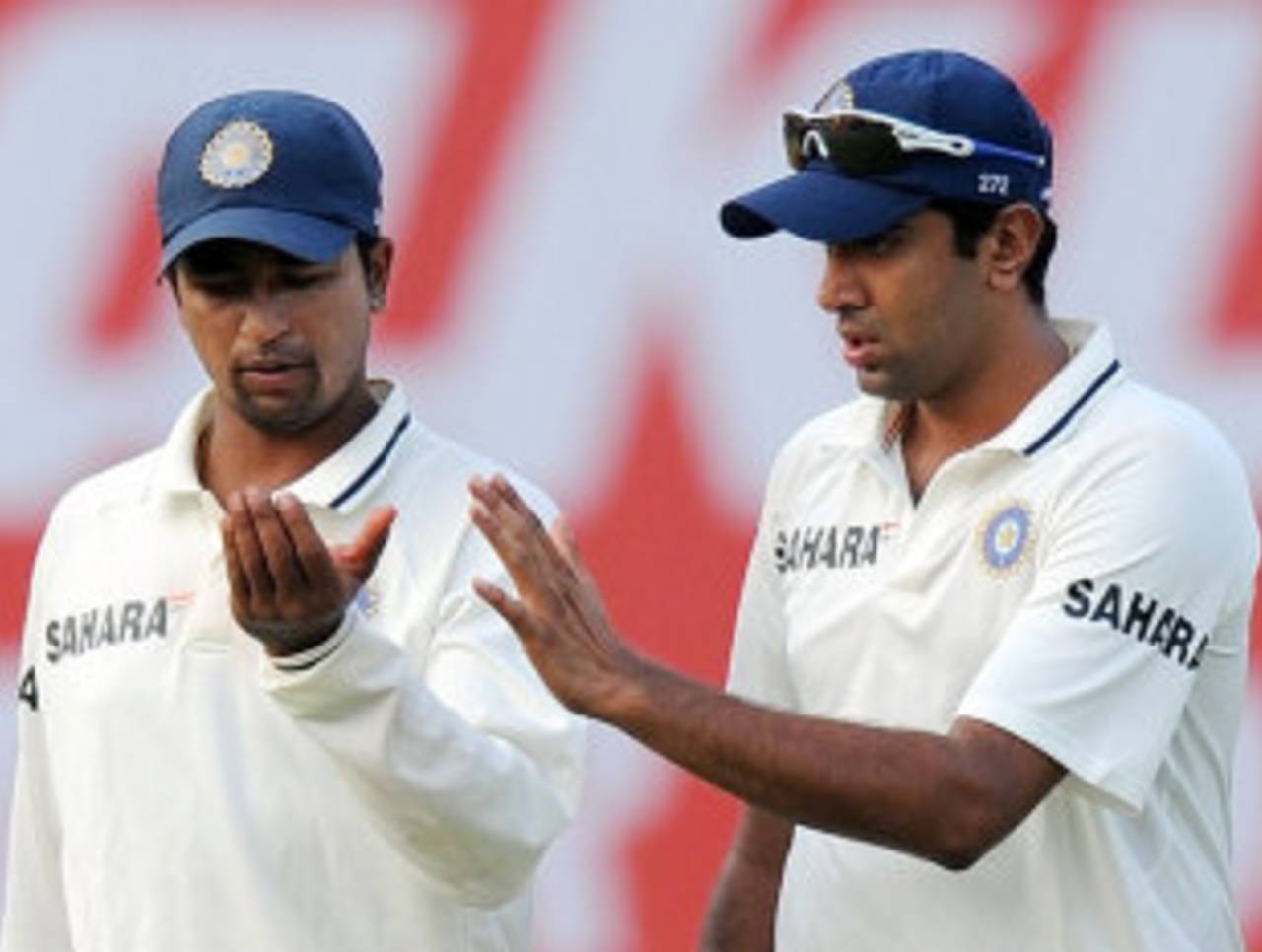Memo to India's bowlers
Sure, the wickets in Australia are faster and bouncier than back home; all the more reason to pitch it up

Bounce isn't just for the fast bowlers. Ojha and Ashwin can use it to their advantage • AFP
When a young fast bowler lands in Australia, fantasies of bouncing batsmen out begin to play in his mind. Nothing pleases a fast bowler more than the sight of a batsman hopping and ducking for cover, but not many young fast bowlers realise that the idea of bouncing the top order out is a fallacy in international cricket. Most batsmen at this level are adept at handling the short-pitched stuff, and in fact they secretly hope that bowlers waste their energy, and the shine on the ball, by bowling bouncers. Whatever doesn't get a batsman out doesn't hurt him. It's important for the likes of Umesh Yadav, Abhimanyu Mithun and Ishant Sharma to take a leaf out of Zaheer Khan's book of line-and-length bowling in Test cricket. The new Kookaburra swings appreciably in the air and it's important to keep the ball in the air for longer by pitching it fuller.
The wicketkeeper collecting the ball with his fingers consistently pointing upwards is a wonderful sight for a bowler. The bounce and carry on Australian pitches encourage the bowler to run in a little harder and bowl a little quicker. Most bowlers from the subcontinent are not used to getting rewarded in such a quantifiable manner, and often get carried away. It's important for the younger Indian bowlers to remember that however nice it feels to see the ball carry through to the wicketkeeper at a good height, it's all about dismissing the batsman. I can tell you that an opener hates to be made to play at most deliveries, and is more susceptible to making errors when he is forced to play. It's important to make the new ball count, for the failure to take wickets with the it can often result in the team spending long hours in the field.
While the new Kookaburra swings appreciably, it ceases to swing when the seam and shine disappear. A bowler who wreaks havoc with the new ball becomes easy pickings with the old one. Once it stops swinging in the air, you have to extract movement off the surface, and for that you must hit the deck hard. The good thing is that the hard Australian surfaces are very responsive, but the tough part is that it calls for more effort from the bowler. India's bowlers may have to bowl shorter spells but they must put everything behind the ball in those four or five overs. In Australia it's all about quality, not quantity.
Australian surfaces with their pace and bounce may be ideal for fast bowlers, but the bounce can be a spinner's ally too. While a spinner must always have the mindset of a fast bowler, he should refrain from bowling it quicker in the air. The easiest way to play a spinner is from the crease, which is possible when the bowler bowls quicker and the batsman doesn't need to use his feet to smother the spin. If Ashwin and Ojha are prepared to flight the ball, they're sure to get some assistance from the surface. The bounce ensures that edges carry comfortably to the close-in fielders, so batsmen have to be extra careful while playing defensive shots. Most Australian grounds have long boundaries and that should further encourage the Indian spinners to toss the ball up a bit. Most Australian batsmen prefer to attack spinners, but not many of them use their feet all that well, so the slower India's bowlers bowl, the better their chances of creating opportunities.
Former India opener Aakash Chopra is the author of Out of the Blue, an account of Rajasthan's 2010-11 Ranji Trophy victory. His website is here and his Twitter feed here